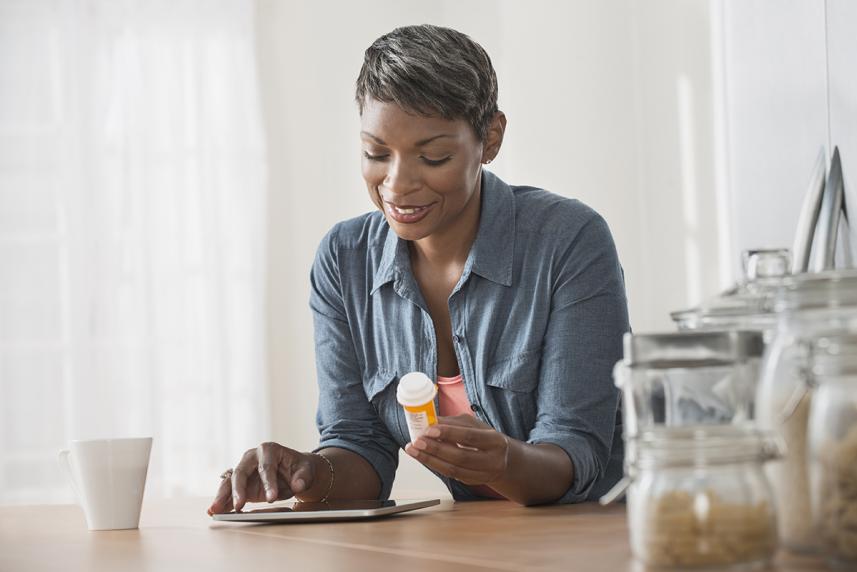What You Need to Know About Opioids
More Americans are dying from opioid overdoses than ever before. Here’s how to keep you and your loved ones safe.

Opioids have been in the news a lot lately. There is good reason for this. The number of overdose deaths has gone up by 4 times since 2000, according to the Centers for Disease Control and Prevention (CDC), and it’s not slowing. In 2021, 107,622 people died of a drug overdose. That’s 15% more than in 2020. Most of those deaths — 75% in 2021 — were opioid overdoses.
It’s a big issue that could affect you or a loved one. So it’s important to understand how opioids work, their risks, and how to handle them. Here’s what you need to know.
What Are Opioids?
Opioids are a class of drugs that include strong prescription pain relievers (e.g., oxycodone, tramadol, and fentanyl) and illegal drugs (e.g., heroin). Prescription opioids are used to treat moderate to severe pain. They are often prescribed after surgery or an injury, or for chronic health conditions like cancer or chronic pain.
Prescription opioids are typically safe when taken as prescribed and for a short time period. However, long-term use puts people at risk for opioid dependence, addiction, and even overdose. These can lead to misuse.
Opioid misuse can include taking higher doses than prescribed, taking someone else’s opioids, or using the medication intentionally for euphoria. It can even lead to use of illegal opioids in extreme cases.
If you’re struggling with a mental health issue such as substance use disorder, depression, or anxiety, help is here. You can get mental health support and programs through BlueForMe, a digital health management tool that’s included with your health plan. Call 844-730-2583 to see if you’re eligible for BlueForMe today.
How to Safely Take Opioid Medicine
If your doctor prescribes an opioid for pain, these are steps you can take to use them safely:
1. Use them as prescribed. Do not take extra doses.
2. Check and follow the instructions each time you take a dose.
3. Talk to your doctor about other medications you’re taking. Some can interact with opioids. Common ones include certain antibiotics and antidepressants, muscle relaxers, and sedatives. Ask if you need to make some changes while you’re using opioids.
4. Opioids can cause drowsiness. Do not drive or operate any machinery after taking.
5. Use the same pharmacy for all your medications. Talk with your pharmacist about all medications, vitamins, and supplements you take.
6. Do not break, dissolve, or crush opioid pills.
7. Follow up regularly with your doctor. Work together to keep track of how the medication is working. Talk about side effects or signs of opioid misuse. Signs to watch for include:
- Drowsiness.
- Uncontrollable cravings.
- Weight loss.
- Changes in sleep habits.
- Lack of hygiene.
- Social isolation.
Having a conversation with your doctor can help you prevent opioid misuse. You can also discuss alternative options for pain control. The good news is there are alternatives that come with fewer risks. Chronic pain treatment may need a combination of different approaches and must be individualized. Options might include:
- Over-the-counter medications like ibuprofen and acetaminophen.
- Physical therapy.
- Exercise.
- Relaxation techniques.
- Laser therapy.
For more information about these and other pain management treatments, check out the private health resource library in your BlueForMe app. You’ll find articles and advice reviewed by medical experts you can trust. Call 844-730-2583 to see if you’re eligible for BlueForMe today.
How to Safely Store and Dispose of Drugs
Your medications, especially opioids, can be dangerous if used by someone else. If you have children in the home, this is very important to remember. One accidental dose of an adult medication could significantly harm a child or even be fatal. That's why storing them safely is crucial.
Also, dispose of them when you no longer need them. Some smart ways to do that:
- Call your pharmacy or local police department. Ask if they have a take-back program for unused medications.
- Check the Food and Drug Administration website. You’ll find other steps for safely disposing of unused medicines.
- Mix the medications with dirt, coffee grounds, or cat litter, then throw them in the trash.
- Check the Drug Enforcement Agency for a list of their authorized collectors.
Opioid safety starts with you. By following the steps detailed above, you can keep yourself and your family safe.
[SOURCES]
[1] “Understanding the Epidemic.” Centers for Disease Control and Prevention, March 17, 2021, https://www.cdc.gov/drugoverdose/epidemic/index.html. Accessed July 7, 2022.
[2] “Skewed Opioid Prescribing Patterns in the United States – A Few Providers Prescribe a Large Proportion of Opioids.” National Institute on Drug Abuse, January 21, 2021, https://nida.nih.gov/news-events/nida-notes/2021/01/skewed-opioid-prescribing-patterns-in-the-united-states%E2%80%94a-few-providers-prescribe-a-large-proportion-of-opioids. Accessed July 7, 2022.
[3] “Risks for Other Drugs Interacting with Opioid Medications.” Mayo Clinic, May 15, 2018, https://newsnetwork.mayoclinic.org/discussion/risks-for-other-drugs-interacting-with-opioid-medications/. Accessed July 7, 2022.
[4] “Signs of Opioid Abuse.” Johns Hopkins Medicine, https://www.hopkinsmedicine.org/opioids/signs-of-opioid-abuse.html. Accessed July 7, 2022.
[5] “Drug Disposal: FDA’s Flush List for Certain Medicines.” Food and Drug Administration, October 1, 2020, https://www.fda.gov/drugs/disposal-unused-medicines-what-you-should-know/drug-disposal-fdas-flush-list-certain-medicines. Accessed July 7, 2022.
[6] “Where and How to Dispose of Unused Medicines.” Food and Drug Administration, April 2, 2021, https://www.fda.gov/consumers/consumer-updates/where-and-how-dispose-unused-medicines. Accessed July 7, 2022.
[7] “Controlled Substance Public Disposal Locations — Search Utility.” United States Drug Enforcement Administration, https://apps.deadiversion.usdoj.gov/pubdispsearch/spring/main;jsessionid=-E_he3feEnG-vdj9loTSy_hv7ed7Md5vEOib3Wqw.web1?execution=e1s1. Accessed July 7, 2022.
[8] “Mega-Model Predicts US Opioid Deaths Will Soon Peak.” Nature, June 1, 2022, https://www.nature.com/articles/d41586-022-01519-z. Accessed July 7, 2022.
DISCLAIMER: Florida Blue has entered into an arrangement with Wellframe to provide members with care decision support services, information and other services. This article is provided by Linkwell Health through their arrangement with Wellframe. Please remember that all decisions that require or pertain to independent professional medical/clinical judgment or training, or the need for medical services, are solely your responsibility and the responsibility of your physicians and other healthcare providers. Wellframe is an independent company that provides online services to Florida Blue members through the Blue for Me app.
